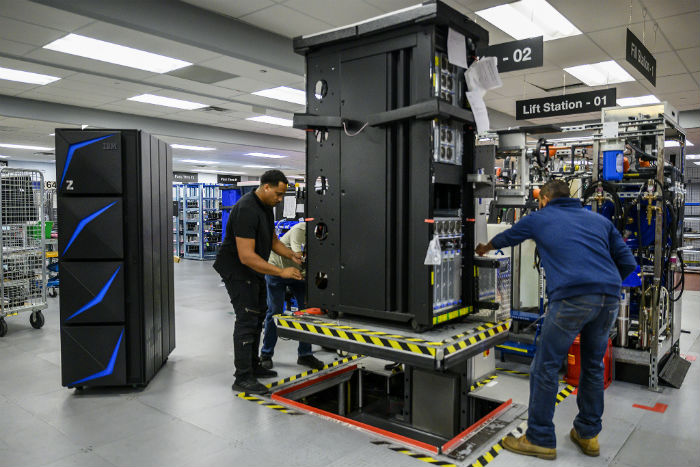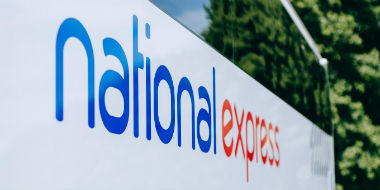Systems
IBM’s z15: Built for the Cloud You Want, with the Privacy and Security You Need
September 12, 2019 | Written by: Ross Mauri
Categorized: Hybrid Multicloud | Systems
Share this post:

As more enterprises embrace a hybrid multicloud strategy, IBM is addressing their most important requirements during this transformation with the new z15, which now features encryption everywhere, cloud-native development, and instant recovery.
IBM consulted with more than 100 companies as part of the design and development for IBM’s z15, a secured and highly-resilient enterprise platform. Here’s what’s possible with it today:
- Encryption everywhere. With this system, we’re introducing an innovative new approach to security by providing data encryption everywhere. z15’s Data Privacy Passports[4] enables clients to provision and revoke access to data at any time, across a hybrid multicloud environment.And our new high-end IBM DS8900F enterprise storage system offers IBM Z and LinuxONE clients enhanced levels of control, resilience and availability for data storage—all crucial to operating in the cloud.
- Cloud-native development. The z15’s cloud-native development enables developers to more easily modernize apps in place, build new cloud-native apps, and securely integrate important workloads across the hybrid cloud.
- Instant Recovery. And a new capability called Instant Recovery[5] enables users to access full system capacity for a period of time to accelerate shutdown and restart of IBM Z services to get back to their service levels in half the time.
When it comes to the cloud, the shift from experimentation to digital transformation is in full swing[1], with enterprises demanding increasing levels of speed and scale. But as adoption continues to rise, so, too, do the concerns over privacy, secure access to data and resiliency.
The open architectures that support the cloud era can promote agility and innovation, but sharing data across ecosystems carries risks. Last year, 60 percent of global businesses reported a data breach caused by a vendor or other third party[2].
In addition to negative business impact, these breaches are shaking consumer confidence as well. A Harris study commissioned by IBM[3] found that 64 percent of consumers have opted not to work with a business due to concerns about data security. The same study also found that 75 percent of the respondents would share more personal information if it could be revoked at any time.
When it comes to resiliency, the journey to the cloud requires strategic planning. Downtime, whether planned or unplanned, can damage a company’s reputation and rack up considerable costs. Recent ITIC survey data [May 16, 2019: Hourly Downtime Costs Rise; ITIC: Information You Can Use] shows 86 percent report the cost of downtime at over $300,000 per hour, while one-third of those surveyed say their enterprise hourly downtime costs exceeded $1 million, making a fast recovery time crucial.
As companies continue to forge their future around digital reinvention, IBM’s z15 offers clients the ability to process up to 1 trillion web transactions a day[6], with the security, privacy, agility and resiliency they need, to help them to compete and win.
______________________________________________________
[1] IBM CEO Ginni Rometty on Chapter 2 of Digital Transformation
[2] Ponemon and Opus 2018 Data Risk in the Third-Party Ecosystem: Third Annual Study
[3] 2019 IBM and Harris Poll Privacy study, commissioned by IBM
[4] For additional information, see IBM’s relevant Announcement Letters.
[5] Measurements were collected in a controlled environment running an IBM developed workload under z/OS comprised of OLTPSE transactional and COBOL Batch workloads. Comparisons were made between z15 and z14. Given that individual configurations, shutdown and restart procedures may be different, individual client results may vary.
[6] Performance result is extrapolated from IBM internal tests running in a z15 LPAR with 36 or 39 dedicated IFLs and 256 GB memory, a z/VM 7.1 instance in SMT mode with 4 guests running SLES 12 SP4. With 36 IFLs each guest was configured with 18 vCPU. With 39 IFLs 3 guests were configured with 20 vCPU and 1 guest was configured with 18 vCPU. Each guest was configured with 64 GB memory, had a direct-attached OSA-Express6S adapter, and was running a dockerized NGINX 1.15.9 web server. The guest images were located on a FICON-attached DS8886. Each NGINX server was driven remotely by a separate x86 blade server with 24 Intel Xeon E5-2697 v2 @ 2.7GHz cores and 256 GB memory, running the wrk2 4.0.0.0 benchmarking tool with 48 parallel threads and 1024 open HTTPS connections. The transferred web pages had a size of 644 bytes.

General Manager, IBM Z
It’s a Long and Open Road Ahead for Bus & Coach Travel
As one of the oldest forms of public transport, the bus occupies a special place in our hearts and lives. For more than a century, these vehicles have carried us to work, school, holiday destinations and festivals. But bus and coach companies can hardly afford to be sentimental nowadays. Technological innovations are creating new models […]
How a Hybrid Multicloud Strategy Can Overcome the Cloud Paradox
Public clouds have a lot to offer. Public clouds bring about agility, elasticity, and speed, which make a company’s IT shop become a lot more responsive to the needs of its business. By shifting workloads to the cloud, businesses can make great strides in reducing costs and boosting productivity. This allows them to focus on […]
The 3 Beachheads of AI
(Part 2 in a Series) We have been partnering with and assisting clients on their data needs and strategies for years. It’s clear that data and AI are two-sides of the same coin; in fact, this understanding spawned the AI Ladder concept. We’ve developed skills training in the areas of data science and machine learning; […]


